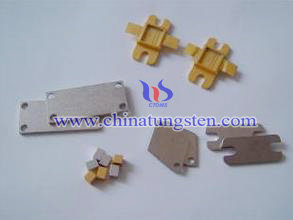Tungsten Copper Power Injection Molding — Key Technologies(1/2)
- Details
- Category: Tungsten Information
- Published on Thursday, 03 March 2016 17:23
- Written by xiaobin
- Hits: 269
Tungsten copper powder injection molding (PIM) is based on conventional powder metallurgy (PM) and combines with plastic molding process to develop a new near net shape molding process. Its appearance makes the conventional metal powder molding process limits on the shape of the product has been a breakthrough, applicable to the preparation of relatively complex geometry, uniform organizational structure, small size, high-performance parts. MIM has many advantages, such as one-step forming, with little or without subsequent processing, minimal dimensional tolerances, high consistency of the batch, injecting material can be used repeatedly, high material utilization, lower cost of production, products surface finish without subsequent processing conditions can still be achieved Ra3.2, nearly fully dense, uniform micro-structure, high flexibility and so on.
Theoretically, injection molding of tungsten copper is used in a proportion of polymer (binder) and tungsten and copper powders under certain conditions, to form a uniform blend having good flowability, molded parts after formation of the desired complex shape by injection then give a final product degreasing, sintering process, and which contains the molding powder, selection and control parameters of the binder are sintered tungsten affect copper powder injection molding process key technologies.
1. Injection Molding Powder: Due to MIM process usually used for preparing parts with small size and complex shape or structure, it has higher requirements compared with conventional powder metallurgy, the finer granularity of powder, which is also the major factor to block it out in developing. Currently the metal powder injection molding process for the production includes water atomization method, aerosol method and carbonyl.

| Tungsten Copper Supplier: Chinatungsten Online tungsten-copper.com | Tel.: 86 592 5129696; Fax: 86 592 5129797;Email:sales@chinatungsten.com |
| Tungsten News & Prices, 3G Version: http://3g.chinatungsten.com | Molybdenum News & Molybdenum Price: http://news.molybdenum.com.cn |





 sales@chinatungsten.com
sales@chinatungsten.com